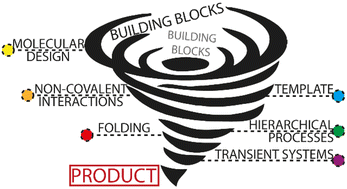Dynamic covalent synthesis†
Abstract
Dynamic covalent synthesis aims to precisely control the assembly of simple building blocks linked by reversible covalent bonds to generate a single, structurally complex, product. In recent years, considerable progress in the programmability of dynamic covalent systems has enabled easy access to a broad range of assemblies, including macrocycles, shape-persistent cages, unconventional foldamers and mechanically-interlocked species (catenanes, knots, etc.). The reversibility of the covalent linkages can be either switched off to yield stable, isolable products or activated by specific physico-chemical stimuli, allowing the assemblies to adapt and respond to environmental changes in a controlled manner. This activatable dynamic property makes dynamic covalent assemblies particularly attractive for the design of complex matter, smart chemical systems, out-of-equilibrium systems, and molecular devices.

- This article is part of the themed collection: 2024 Chemical Science Perspective & Review Collection


 Please wait while we load your content...
Please wait while we load your content...